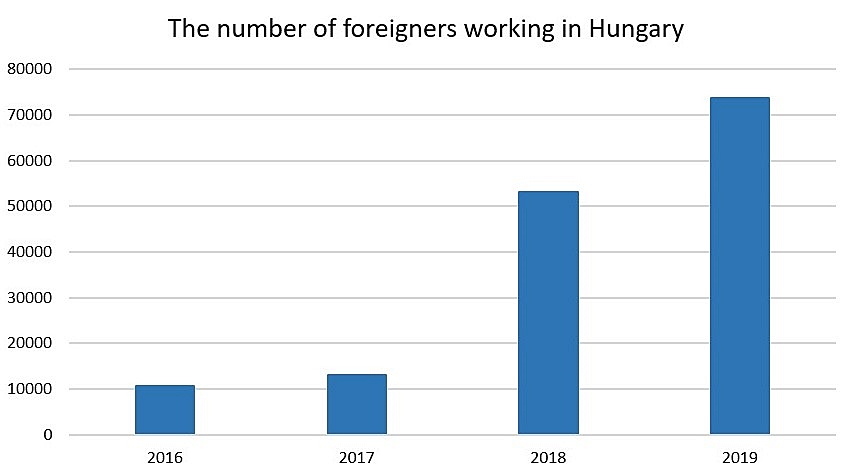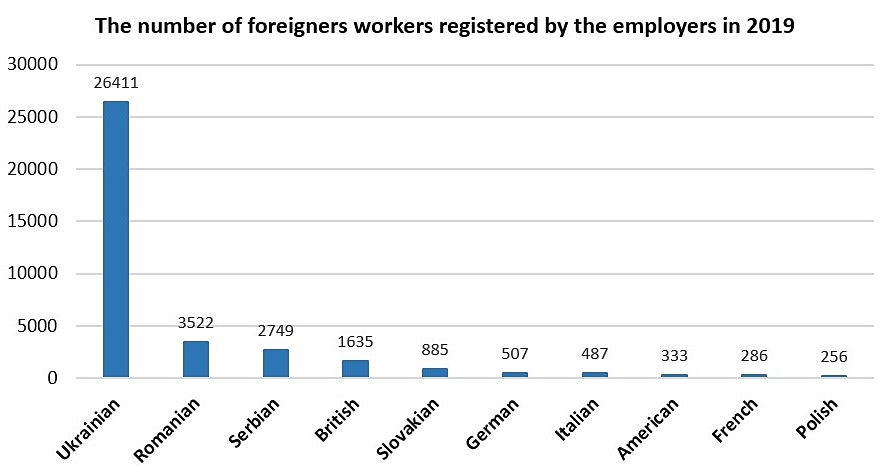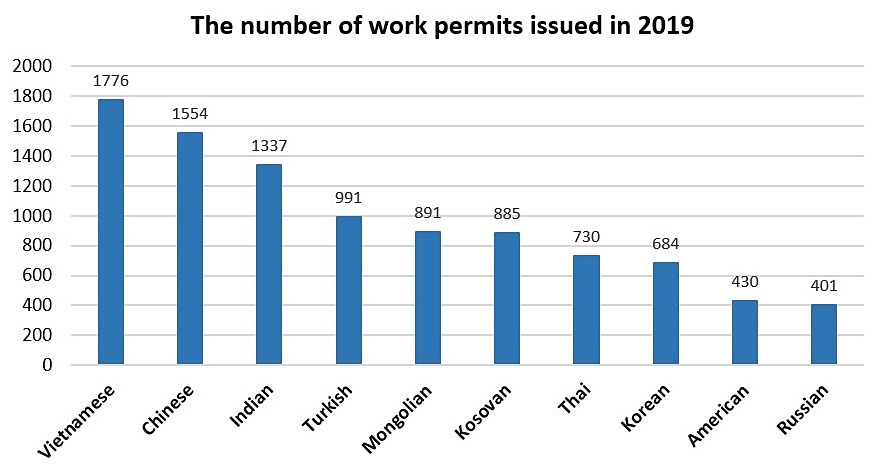“Hungarian dream” mostly attracts underqualified foreign workers

According to the latest state reports, the number of foreigners working in Hungary has increased fivefold since 2016. Considering the proportion of workers by nationality, the majority of third-country workers have come from Ukraine.
The coronavirus pandemic has created a potentially lasting imprint on EU labour markets. During the last years, the Hungarian economy has been suffering from a labour shortage, posing challenges to employers across various sectors. In contrast to this, approximately 100,000 people have lost their jobs due to the economic shutdown. Due to the lower wages, easier overtime, greater vulnerability, many employers opt for foreign workers, and the government has not yet taken any measures that would urge them to employ Hungarians, 24 reported.
The reports of the National Employment Service confirm that
in the last years, an overwhelming majority of mostly underqualified Ukrainians have come to Hungary intending to get a job.
Hungarian labour shortage and the solutions
Statistics show that a significant part of the foreign workers coming to Hungary is underqualified, so they take jobs with low added value, such as factory assembly.
The country experienced the most significant increase in the number of foreign workers in 2018, but neither the National Employment Service nor the government provided data about the exact amount of foreign employees for a long time.

Since 2017, third-country nationals coming to Hungary with the intention of getting a job do not have to apply for a residence permit if the employer registers them. The effect of this measure can be clearly seen in the figure above. National Employment Service data shows that most of the foreign workers arrived from Ukraine and Serbia.
Concerning the global embeddedness of the Hungarian economy, the country has a high per capita stock of Foreign Direct Investment (FDI) in proportion to GDP for Central and Eastern Europe and the share of foreign-controlled, non-financial corporations in GDP is more than double the EU average.
The proportion of workers by nationality
In 2018, altogether 69,732 foreign workers entered the Hungarian labour market: 37,920 work permits were issued, and an additional 31,812 foreign workers were registered by the employers.
53% of the almost 70,000 third-country workers were Ukrainian, 5,892 people arrived from Serbia and 4,095 from Romania.


These numbers show a significant increase compared to the data of the previous years. In 2016, only 789 workers arrived from Ukraine, and in 2017, this number was 3,000. Last year, most of the work permits were issued to people from Vietnam, China and India, and there was also a significant increase in the number of Turkish and Kosovan employees. Nonetheless, Ukraine still had the highest number of workers registered by employers.
Socio-demographic characteristics
Although the National Employment Service does not discuss the demographic variables of the foreign workers in the Hungarian labour market, 24 provided an approximate analysis based on the demographic characteristics of the Ukrainian employees.
The data of the past few years presents a rather static trend:
The majority of third-country workers are relatively young and underqualified. A large proportion of them are employed in the manufacturing and construction industry.
Most of the foreign workers (currently 59.1%) belong to the 25−44 age group, and the number of employees under the age of 20 and over the age of 55 is negligible. Concerning their education, almost half (40.6%) of the work permits were issued to third-country nationals who only finished primary school, and this ratio is similar (55.6%) in the case of registered employees. In 2019, 25% of foreign workers had a college or university degree.
Source: 24.hu


